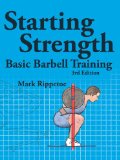Theory: "Only exercising in the fat burning zone reduces body fat.”
In many magazines and fitness studios one always reads or hears: “If you want to lose weight, you should exercise in the fat burning zone. The only way to reduce body fat is to exercise with a low heart rate (ca. 120-130). Whoever exercises with a high heart rate will not lose any fat.”
How could this incorrect information be circulated so often?
The problem is that no distinction has been made between absolute and relative fat consumption.
An example:
a)
A person jogs on the treadmill at a low speed. The heart rate is in the fat burning zone (heart rate = 120/min = 60% of maximal heart frequency). At this intensity level, the body gets ca. 80% of the required energy from the burning of fat and the remaining 20% from the burning of carbohydrates. During this workout the body uses about 8 kilocalories of energy a minute.
30 minutes exercise
=> 30 min x 8 kcal/min
= 240 kcal energy consumption
80% of 240 kcal = 192 kcal
=> 192 kcal : 9 kcal/g
= 21 g fat burnt
20% of 240 kcal = 42 kcal
=> 42 kcal : 4 kcal/g
= 11 g carbohydrates burnt
b)
On another treadmill, a different person is running at a higher speed and therefore has a higher heart rate (heart rate = 160/min = 80% of the maximal heart frequency). At this intensity level, the body gets ca. 50% of the required energy from the burning of fat and the remaining 50% from the burning of carbohydrates. During this workout the body uses about 18 kilocalories of energy a minute.
30 minutes exercises
=> 30 min x 18 kcal/min
= 540 kcal energy consumption
50% of 540 kcal = 270 kcal
=> 270 kcal : 9 kcal/g
= 30 g fat burnt
50% of 540 kcal = 270 kcal
=> 270 kcal : 4 kcal/g
= 68 g carbohydrates burnt
As a result of the low energy consumption of the body in example “a”, the absolute amount of burnt fat is less than in example “b” even though the relative energy extraction of fat is higher.
However, weight loss depends on the absolute amount of burnt fat. Although relativ less energy is taken from fat as the physical load increases, the total calorie consumption increases to such an extent that the absolute amount of fat used is higher.
So you can forget everything you have ever heard with regard to fat burning heart rates and fat burning. It only depends on the total amount of calories burnt. Therefore you can exercise at a heart rate that you are comfortable with. The ideal heart rate for beginners is usually a low one. Beginners are usually not fit enough to exercise for longer periods of time if the heart rate is too high.
Do not forget that exercise can last a lot longer if done with a lower heart rate than a higher one. This means that you burn more calories if you go walking for an hour than if you go jogging for 10 minutes and stop because you have exhausted yourself.
top  |
Theory: "Fat burning only begins after 30 minutes exercise."
This is yet another myth that does not seem to go away. Your body does not have a time-controlled switch which changes from one type of energy extraction to the other after a certain time. The energy supply is dependant on exercise intensity. As the intensity of exercise increases, less energy is extracted from fat and is supplement by the energy extraction from carbohydrates. Even if the relative proportions of energy extraction change, carbohydrates and fats always work parallel to each other.
Theory: "Weight loss is caused by fat burning during exercise."
Fat burning and the break down of fat are two completely different things. Despite an intensive workout with high fat burning levels, the body’s weight does not necessarily have to decrease. Whether energy is extracted from fat or not does not reveal whether body weight has been lost. Body fat only decreases if the energy balance is negative. When the energy balance is negative the body extracts lacking energy from body fat. In order to break down one kilogram of body fat, one needs to cut down on about 7,000 kilocalories (not 9,000 kilocalories as fatty tissue is not only made out of fat).
During sport it is not only the calories that are burnt during exercise. Exercise activates the metabolism so the body continues to burn a lot more calories than normal long after exercise is completed. This fat burning effect which takes place after exercise makes weight loss easier. Regular exercise also increases the body’s muscle mass. Muscles use more energy than the rest of the body tissues. As a result the body’s daily energy consumption (basic metabolic rate) increases. So exercising helps with weight loss in three ways.
top 

You Are Your Own Gym: The Bible of Bodyweight Exercises, Mark Lauren, Joshua Clark

Starting Strength, 3rd edition,
Mark Rippetoe
|

